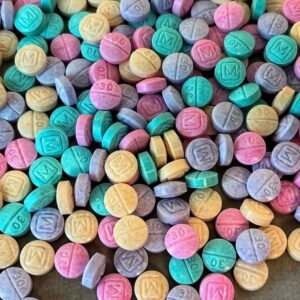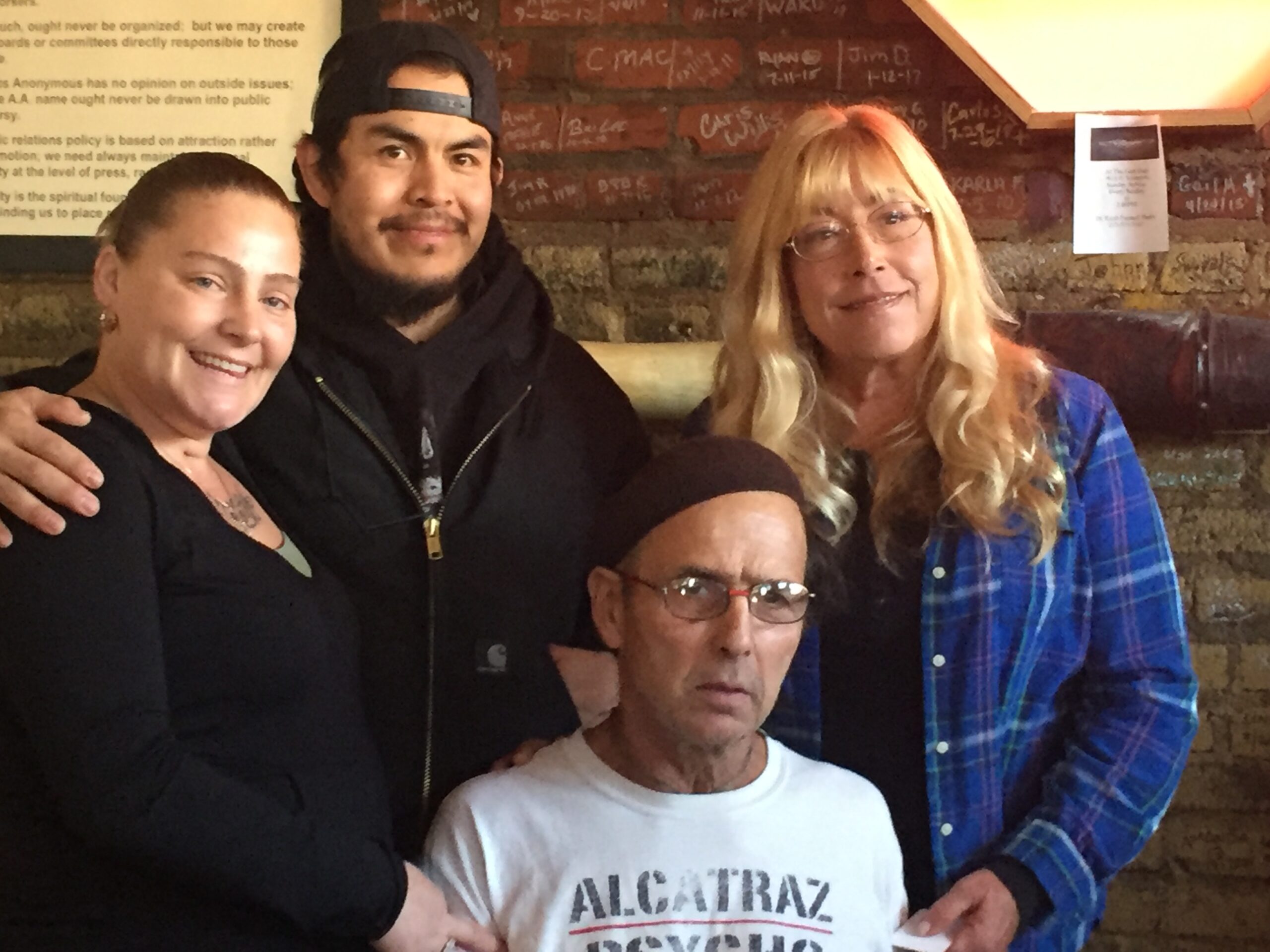Fentanyl Crisis Hits the Delaware Valley Hard

Jorge Valdez-Rosas didn’t realize law enforcement was hot on his trail when he checked into the Valley Forge Casino Resort in King of Prussia last month.
Like many drug-trafficking organizations smuggling drugs into the U.S., the one linked to the suspected drug mule from Arizona was allegedly tied to Mexico, according to a probable-cause affidavit.
Investigators intercepted and monitored Valdez-Rosas’ communications and learned he was setting up a deal to sell a large quantity of fentanyl to a third party on behalf of unnamed co-conspirators.
On Jan. 31, members of a federal task force and detectives from Montgomery County and Upper Merion Township staked out Rosas-Valdez at the hotel.
He showed up with a large duffel bag–later seized and revealed to contain five kilograms of fentanyl.
The 166,000 confiscated doses were worth an estimated $1.6 million, Montgomery County District Attorney Kevin Steele said, praising authorities for a recovery that saved “countless lives.”
These drug busts are common in Pennsylvania, where fentanyl–which reemerged in the state’s drug supply in 2013–is now the “dominant opioid” among users who once preferred heroin, according to a state attorney general’s report released last year.
“I had a healthy habit,” says Richard Phillip, who got sober with the help of The Last Stop founder Ed “Eddie Z” Zampitella.
Phillip remembers stealing fentanyl patches from his mother following her diagnosis of non-Hodgkin’s lymphoma. He used fentanyl for more than a decade before the drug was widely available.
“It hits you really hard, punches you in the face,” Phillip, originally from the Camden area, recalled of the drug’s effects. “You get that rushed feeling. It gives you that boost. You are a rocket. Life’s good, but it doesn’t last.”
Last year, the DEA seized more than 15,000 pounds of fentanyl, enough to kill every American. Over the first three months of 2022, Pennsylvania authorities seized more fentanyl than they had in all of 2021. The commonwealth was among five states that submitted the most samples containing fentanyl to the Drug Enforcement Agency’s National Forensic Laboratory Information System.
According to federal officials, Mexican cartels and criminal organizations smuggle most of the drugs across the southern border. Traffickers prefer selling fentanyl because it’s cheaper to produce and more potent, with effects 50 times stronger than heroin and 100 times stronger than morphine.
Fentanyl is often laced into counterfeit pills, making it easier for traffickers to conceal than when in powder form, a disturbing trend that Pennsylvania officials say has contributed to a spike in fatal overdoses. The grip of the crisis led former Gov. Tom Wolf to sign a law that decriminalized fentanyl strips, once considered drug paraphernalia.
“It’s running rampant. There’s more fentanyl than there’s dope. I don’t think they make dope no more,” Zampitella, who runs a sober clubhouse in the epicenter of Philadelphia’s opioid crisis, told DVJournal during a phone interview while visiting Chicago. “This is like a vacation. It’s nothing like Philly. We told people, ‘You should come to Kensington.’”
Last year, Philadelphia’s DEA division reported that 20 percent of analyzed fentanyl seizures were in the form of pills and tablets. The agency seized a record 9.5 million counterfeit drugs the year before.
Nationwide, about 80 percent of more than 80,000 opioid deaths were attributable to fentanyl, federal statistics show. With the nation’s third-highest number of fatal overdoses, Pennsylvania saw overdose deaths jumped nearly 17 percent in 2020. They crested above 5,400 in 2021, meaning an average of 15 Pennsylvanians died each day, with about 78 percent of cases involving fentanyl, according to the state statistics. The stark impact was on display in Philadelphia, where fentanyl was detected in 27 percent of submissions analyzed by the police department’s forensics unit in 2021, compared with less than 1 percent six years before.
While the death toll has been staggering, prosecutors have had their hands full with cases like that of Rosas-Valdez, one of the thousands of alleged drug dealers and traffickers arrested since 2017.
Through March 2022, the Attorney General’s Office said more than 8,100 people were nabbed on drug charges, and a combined 8.7 million doses of heroin and fentanyl were taken off Pennsylvania’s streets.
Former attorney general and current Gov. Josh Shapiro, a Democrat, also went after big pharmaceutical companies for allegedly contributing to the opioid crisis by aggressively marketing addictive prescription painkillers. In one of the nation’s largest settlements, Pennsylvania received $26 billion from Johnson & Johnson and three other drug companies from Johnson & Johnson and three other drug companies.
On the national stage, a heated debate has unfolded between Democrats and Republicans about who is fueling the flow of fentanyl into the country. Some Republicans linked fentanyl-related deaths with the record number of migrants entering the U.S. along the Mexican border, NBC reported. Rep Mary Gay Scanlon (D-Penn.), shot down the claims as a “pernicious … attempt to conflate the issues of migrants seeking asylum through our legal processes with the very real scourge of fentanyl trafficking.”
Homeland Security Secretary Alejandro Mayorkas said it was “unequivocally false” that asylum-seekers were smuggling fentanyl into the country.
However, Sen. Ted Cruz (R-Texas) laid the blame squarely on the Biden administration for the fentanyl deaths of men, women, and children.
“One hundred thousand people died last year of drug overdoses,” said Cruz. “My sister died of a drug overdose a decade ago. This is a crisis, but it is a manmade crisis. This administration made a conscious decision to open the borders.”
According to government data cited by NBC, most fentanyl seizures along the southern border were made at ports of entry, where American citizens, foreign travelers, and commercial trucks are screened. The Office of Field Operations accounted for 84 percent of the 14,104 pounds of fentanyl seized along the Mexican border in the fiscal year 2022, while Border Patrol seized only 2,200 pounds of fentanyl over the same period,
For people struggling with addiction, the political conversations taking place in the nation’s capital are less important than the battles being waged back home.
Phillip said he’s lucky to have broken free from the stranglehold of drugs.
“Once you’ve eaten from the fruit, you can’t unknow that feeling. Sometimes you think life is good, but you know what would make it better,” Phillip, who is now pursuing a master’s of divinity from the Catholic Theological Union, told DVJournal.
He still remembers the nights he would roam the streets of Camden, begging strangers to pray for God’s intercession.
“I know we don’t bargain with God … but I remember saying, ‘You put me on a path to save my soul, and I’ll give you my life because it ain’t worth nothing to me anymore,'” Phillip said. “Something came into me that I stopped feeling empty.”
Please follow DVJournal on social media: Twitter@DVJournal or Facebook.com/DelawareValleyJournal



 Zampitella, 65, spoke to the Delaware Valley Journal in the club, where free peanut butter and jelly sandwiches are handed out for lunch. Spaghetti or hot dogs and beans might be on the menu for dinner. A Saturday dessert favorite is banana splits. The food, along with water, is free. Coffee is 75 cents and soda is $1.
Zampitella, 65, spoke to the Delaware Valley Journal in the club, where free peanut butter and jelly sandwiches are handed out for lunch. Spaghetti or hot dogs and beans might be on the menu for dinner. A Saturday dessert favorite is banana splits. The food, along with water, is free. Coffee is 75 cents and soda is $1.

